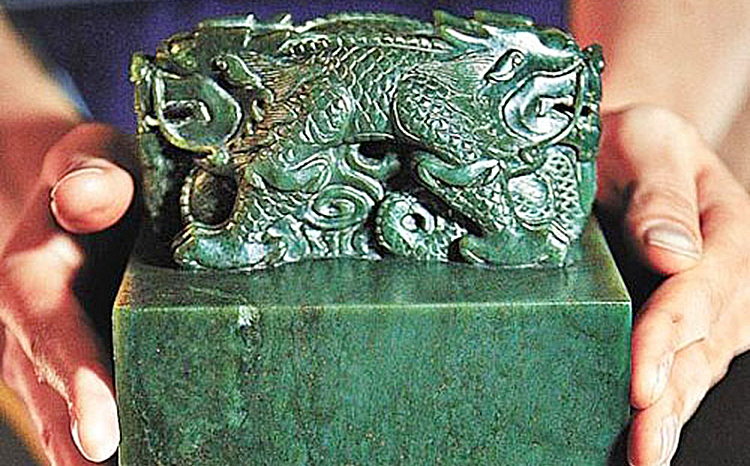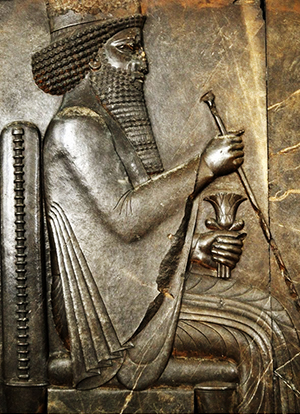
Written by: Dr. Tariq Rahman
Posted on: August 16, 2016 | 
Dr. Ilhan Niaz
Note: The views and opinions expressed in this article are those of the author, and do not necessarily reflect the views of the editorial board of Youlin Magazine.
Most Pakistani historians write chronologically organized political histories of governance in South Asia by rulers neatly divided into periods—classical, medieval, colonial, national—with generous chunks devoted to major actors like kings, leaders of the freedom struggle and strongmen. While medieval historians are few and far between, there are many whose focus of research is the modern period, of which most sources are available in English. Thus the ordinary South Asian historian is found diligently poring over reports, files, diaries, letters, newspapers and other archival material in the Oriental and India Office Collections of the British Library. In 'Old World Empires', Ilhan Niaz deviates from all these norms: first, he writes macro- not micro- history; secondly, he does not work from archival sources but from published secondary sources; and thirdly, he writes about power—the concept of political power—and not about kings, conquerors and prime ministers as individuals. It is about Eurasia i.e the whole of Asia and Europe, as well as the United States in passing, since the latter is an outpost of Britain, but most of the time the focus is on the Old World, where the drama of world power was played out in the last six thousand years of human civilization. All these factors make Ilhan Niaz unique among the historians of Pakistan.

Ilhan Niaz focuses on the “state as the basic structure or unit of analysis” (p. 9). He argues that the state developed two models in Eurasia: the continental bureaucratic state and the state of laws. The former have “arbitrary cultures of power” while the latter govern through laws and institutions, which curtail arbitrariness. In the former, the ruler believes that the wealth of the land is his and uses spies to root out possible opposition. He also uses a powerful bureaucracy to extract as much wealth as possible, and to impose his own footprint on the land and its people. The ruler also favours the military, which becomes the kingmaker, and sometimes the ruler, if the dynasty weakens. His rule is arbitrary, as he is not bound by any law or convention. The author devotes most of the book to the arbitrary continental bureaucratic empires in India, China, Iran, Turkey, Europe, Russia and Japan.
The state in India is called the “realm of chaos”, which reminds one of E.M. Forster’s saying that the essential reality about India may not be mystery but muddle. Basically the land belonged to the ruler—Hindu Raja, Muslim Sultan, Badshah or Nawab—who gave it to his henchmen in lieu of services rendered or expected. However, since the henchmen were not given inalienable legal possession of it, they remained mere rent collectors and exploiters who feared being dismissed or killed by the arbitrary and despotic ruler. To keep his stranglehold on the nobles, the ruler kept a host of spies so that people lived in perpetual fear of informers. This, indeed, is the kind of state that Pandit Kautilya advocated, but did not come to an end with the Hindu rulers of India. It transformed itself into the Muslim sultanates, and then the Timurid state which formally came to its end in 1857.
Niaz has written about Nizam ul Mulk Tusi’s Siyasatnamah, a book about political advice to the Seljuk rulers of Iran, which gives just as unscrupulous advice to the Sultan as Kautilya gives to the Raja. Incidentally, Nicolo Machiavelli’s Prince also gives similar advice to the Italian duke who employed him. The idea is that it is not the advice that creates the arbitrary state but the exigencies of such a state which create the advice. In short, none of these books are a reflection of the quintessential Hindu, Muslim or Christian mind.

In China, there was a huge merit-based civil service apparatus available to the ruler. China also made intellectual progress till the 1800s. However, lack of freedom and pervasive fear of the arbitrary ruler did not allow new theories to be born, so China declined precisely when Europe rose in power. Its present rise owes itself to nationalists and Marxists who copied Europe in certain trends to modernization. The greatest challenge facing China today is environmental degradation. Ilhan Niaz’s advice to the Chinese leadership is that just as Deng Xiaoping broke away from Mao, so Xi Jinping should break away from Deng’s neglect of the environment.

Persia was probably the world’s first empire during the Achaemenid era (c. 559-330 B.C). It was “a theocratic or ideological empire” ruled by civil servants personally controlled by the ruler. Both the civil servants and the ruler could be capricious and arbitrary. The Sassanids too ruled in this manner, and officially promoted the religion of Zoroastrianism. However, the problem with such empires was that they were ruled by the fear of the central ruler, and if he became weak or incapable, his senior generals or officers made a bid for power. At a time of weakness, Iran was conquered by the Arabs, and revived after the adoption of Islam. The Safavids made Shia Islam the ideological mainstay of the rising state from the 15th century onwards. The Qajars who followed, were unable to create the dynamism to sustain them during the pressures of modernity. Thus in 1921, Riza Khan, a cavalry officer, took control of the state and ruled with a heavy hand, in the tradition of the old Iranian states. His son did the same, relying on spies and repression. But the ideological force of dynastic rule, appeal to the past and Iranian nationalism could not motivate the people as much as the appeal to Islam which Khomeini and the Ayatollahs brought to oppose the highhandedness of Riza Shah. Thus he was removed and an authoritarian regime supported by the ideology of religion and revolution took over. This, says Ilhan, is a continuation of the Iranian tradition of authoritarian rule.
You may also like: